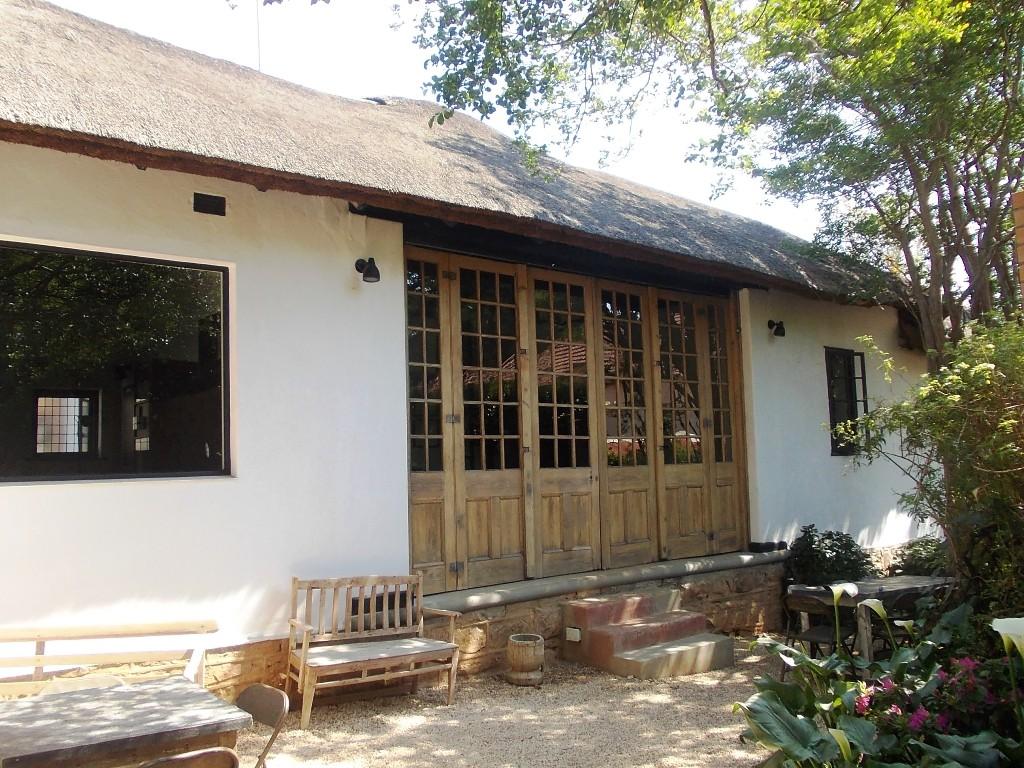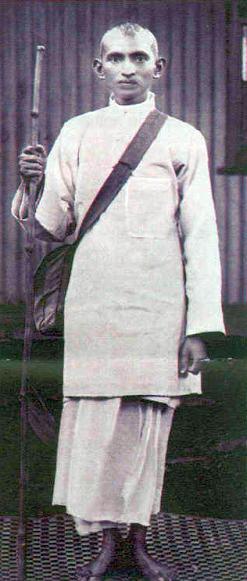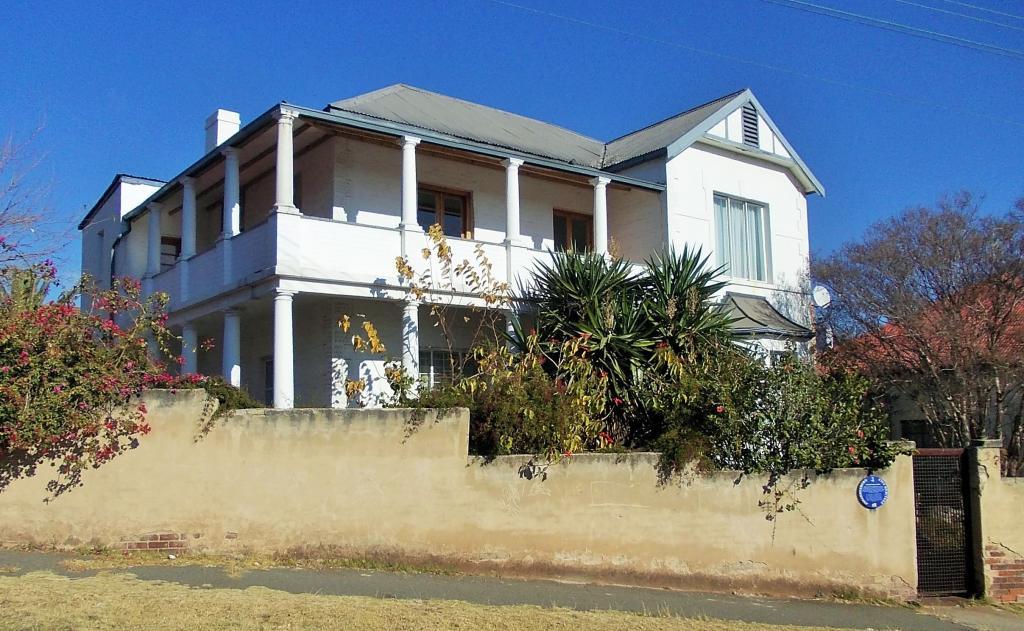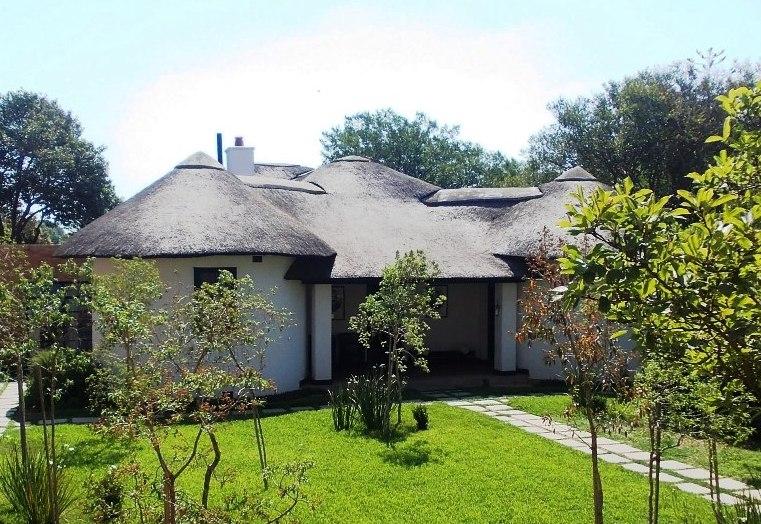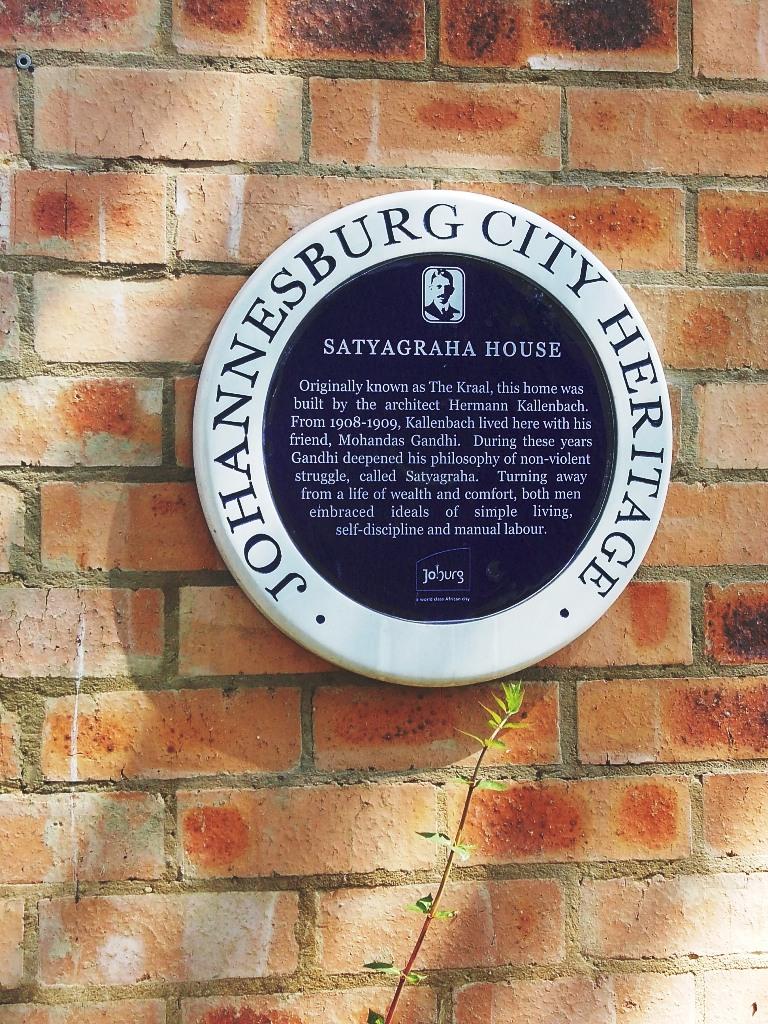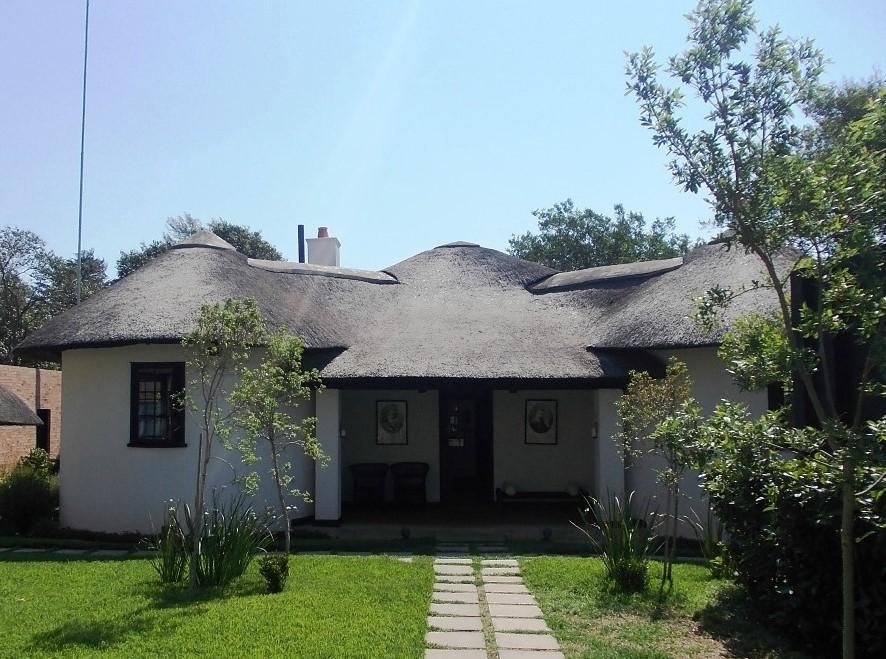
Disclaimer: Any views expressed by individuals and organisations are their own and do not in any way represent the views of The Heritage Portal. If you find any mistakes or historical inaccuracies, please contact the editor.
Satyagraha House is one of Johannesburg's iconic heritage venues. Back in 2009, before its transformation into a museum and guest house, it belonged to the Ball family who after almost thirty years of ownership decided to put it on the market. In the article below, Lucille Davie highlights Gandhi's connection to Johannesburg and the house. She also reveals some of the Ball family's memories and their feelings leading up to the sale. The article was originally published on the City of Johannesburg's website on 7 August 2009. Click here to view more of Davie's work.
Mahatma Gandhi lived in several locations in Johannesburg 100 years ago. One of those houses, in Orchards, is now on sale.
The house, at 15 Pine Road, is owned by Nancy and Jarod Ball. They have lived in the house for the past 28 years, and have raised their three children in it. Now it’s time to move on. They are planning to move to Cape Town, and are sad to be leaving the house behind.
”I wish we could pick the house up and take it with us,” says Nancy Ball.
It’s easy to see why. The 101-year-old, three-bedroomed home, with its beautiful garden and cottage, is a delight. Its wooden floors, large wooden French doors, thatched roof, cosy fireplaces and tall, pure-white walls are perfectly complemented by the Balls’ oak cottage furniture, making it homely and comfortable. And although only a few blocks from the busy Louis Botha Avenue, the house is quiet and exudes a much-loved, peaceful ambience.
Besides the colourful flower beds, the garden is dominated by four mature jacaranda trees, two Pride of India trees, and an unusual 15m tall tulip tree.
It was originally called The Kraal, because it has two rondavels on either side of the front door. It was built in 1908, designed by architects Kallenbach and Reynold. Hermann Kallenbach was a close friend of Gandhi’s and invited him to live in the house with him. They shared the house for several years.
”Though we worked in our own offices, we lived in the same rooms – almost in the same bed – and whilst he cooked for us I did the cleaning. I had to account to him for every little item of expenditure . . . “ says Kallenbach of their time in The Kraal.
It is believed that Gandhi used to sleep on the open stoep, which has been enclosed with magnificent, large wooden concertina doors. Nancy was told that the doors came from a fire station.
The large wooden concertina doors (The Heritage Portal)
Arrived in 1893
Gandhi came to South Africa in 1893 as a lawyer, and remained in the country for 21 years, with several short spells in England and India. He developed his passive resistance or satyagraha ideas in the country, experiencing racial discrimination almost from the moment he arrived as a naïve 25-year-old. He returned to India in 1914 and went on to become a world icon of peaceful resistance.
Early photo of Gandhi
Gandhi said of his experience in the country: “Truly speaking, it was after I went to South Africa that I became what I am now. My love for South Africa and my concern for her problems are no less than for India.”
He spent around 12 years in Joburg, living in various suburbs of the city. One of them was at 11 Albermarle Street in Troyeville, where he lived with his wife, Kasturba, his four sons, and friends Henry and Millie Polak. For a long time it was thought that Gandhi lived at 19 Albermarle Street, a stylish Art Nouveau house a block down the road. This house was revamped and falsely declared a national monument or heritage site in 1994.
Gandhi's Troyeville House
Leaving Troyeville, Gandhi moved into a four-roomed house in Bellevue East with the Polaks, on the corner of Sharp and Albert Streets. The house no longer exists.
He then moved into the Orchards house with Kallenbach. The house was very much in the country, with a tennis court, stables, and a well. Early drawings show it as the only house in the suburb.
Nancy Ball says the garden contains plum, pear and apricot trees, a reminder perhaps of the orchards of fruit trees that were planted by the first farmer Jacobus Petrus Roux in the area, on the farm Klipfontein.
On the market
Ball has been surprised at two things since the house has been on the market. That people from all over the world have shown an interest, including the Indian government. And that his great grand-daughter, Kirti Menon, who lives in the city, was not aware of the house or its significance to her family.
Ball is keen that the house go to someone who would appreciate its heritage. “I want the heritage of the property preserved.”
She would ideally like to see the house used for educational purposes, with a library, and perhaps a meditation centre.
She says that they were not keen on the house being declared a heritage site. They have made sensitive changes to the house, and heritage status would have put restrictions on what could be done.
The small loft above the kitchen was given a dormer window and the floor was lowered, to become her son’s bedroom. They added a partition to the kitchen, separating the scullery from the kitchen nook, and they extended the kitchen southwards. The house also contains a small cellar. The single garage was converted into a double garage 20 years ago.
Alterations had been made shortly after the house was built - in 1916 an additional section was added to the back of the house, consisting of one bedroom, a passageway and two bathrooms.
The garden cottage was originally a stable, with a nearby well. The well has disappeared but the stable was converted, before their time, to a one-bedroomed flat, with kitchen and bathroom.
Satyagraha House (The Heritage Portal)
28 years ago
Jarod Ball was living in this flat 28 years ago, renting from Dora Ogilvy, a woman in her 80s, who had lived in the house for 15 years. She was a weaver and had a loom in every room, says Nancy. Ogilvy had a stroke and her family moved her out. The newly married Balls bought the house, which was “full of antiques, weavings and paintings” when they moved in.
”We moved in in August – the house was cold, damp, and with cracks. The garden was bare. It was a bit daunting,” says Nancy.
The first change they made was to strip off the 1m thick thatch roof, which wasn’t waterproof any longer. A new thatch roof was installed, and with one extra layer, has lasted 28 years.
Last year the house was put on the market for between R2,5-million to R2,8-million, says Ball. When asked what she thought the value was now, her answer was swift: “It’s priceless.”
She says of the house and property: “It is like walking into a secret world.”
A blue plaque was installed after the property was transformed into a guest house and museum (The Heritage Portal)
Lucille Davie has for many years written about Jozi people and places, as well as the city's history and heritage. Take a look at lucilledavie.co.za
Comments will load below. If for any reason none appear click here for some troubleshooting tips. If you would like to post a comment and need instructions click here.

